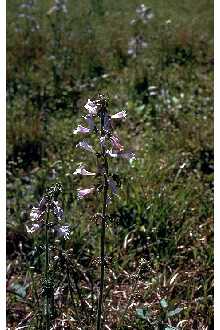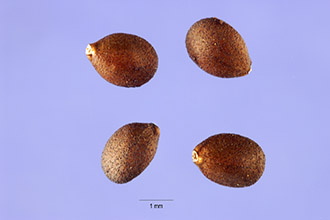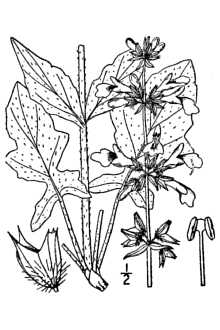Lyreleaf Sage
Scientific Name: Salvia lyrata L.

| General Information | |
|---|---|
| Usda Symbol | SALY2 |
| Group | Dicot |
| Life Cycle | Perennial |
| Growth Habits | Forb/herb |
| Native Locations | SALY2 |
Plant Guide
Use soil moisture sensors to measure the soil moisture of Lyreleaf Sage.
Fact Sheet
Uses
This plant is used mainly for landscape beautification. It has potential for use in cultivated garden situations, in naturalized prairie or meadow plantings, and along roadsides.
Status
Please consult the PLANTS Web site and your State Department of Natural Resources for this plant’s current status (e.g. threatened or endangered species, state noxious status, and wetland indicator values).
Weediness
This plant may become weedy or invasive in some regions or habitats and may displace desirable vegetation if not properly managed. Please consult with your local NRCS Field Office, Cooperative Extension Service office, or state natural resource or agriculture department regarding its status and use. Weed information is also available from the PLANTS Web site at plants.usda.gov.
Description
Lyreleaf sage is a perennial herb with quadrangular flowering stems extending upright from a basal rosette of leaves. The basal leaves are elongated, elliptic, dark green to slightly purplish, and are often lobed or dissected. The light blue to violet flowers are clustered at the top of the stem. Flowering occurs from April to May or June. The seeds are round, dark brown, and held loosely in a cup-like structure.
Adaptation and Distribution
Distribution
Distribution
Lyreleaf sage can grow in full sun and light to medium shade. Native stands are found on roadsides, and in fields and open woodlands. It will grow on many types of soil. Lyreleaf sage is distributed primarily throughout the East and lower Midwest. For a current distribution map, please consult the Plant Profile page for this species on the PLANTS Website.
Establishment
A firm seedbed is required, Seed may be planted into a closely mowed, chemically-killed, or burned sod area with a light disking or harrowing that scratches the soil surface, When seed is sown on a clean-tilled site, cultipacking the soil before planting is recommended, A thick layer of plant residue on the soil surface can interfere with seed germination, Broadcast or shallowly drill 4 to 6 grams of seed per 100 square feet (4 to 6 lb/acre), Planting depth should range from at the soil surface to 1/8 inch deep, Cultipacking after planting is recommended, Use soil moisture sensors to measure the soil moisture of Lyreleaf Sage., Seed germination should occur by fall, and the plants will remain as a small, low-growing rosette throughout the winter, Often it takes 2 or 3 years for lyreleaf sage to produce a dense stand on the planting site,
Management
Apply fertilizer according to soil test recommendations. If not available, a rate of 3.5 to 5.5 oz per 100 square feet (100 to 150 lb/acre) of 13-13-13 should be applied after the seedlings are established and annually thereafter. Because of its low-growing nature, mowing to limit competition from other plants is crucial to maintain a stand of lyreleaf sage. The initial mowing should be delayed until mid to late May (after seed matures). Plants can tolerate regular close mowing during the summer and


